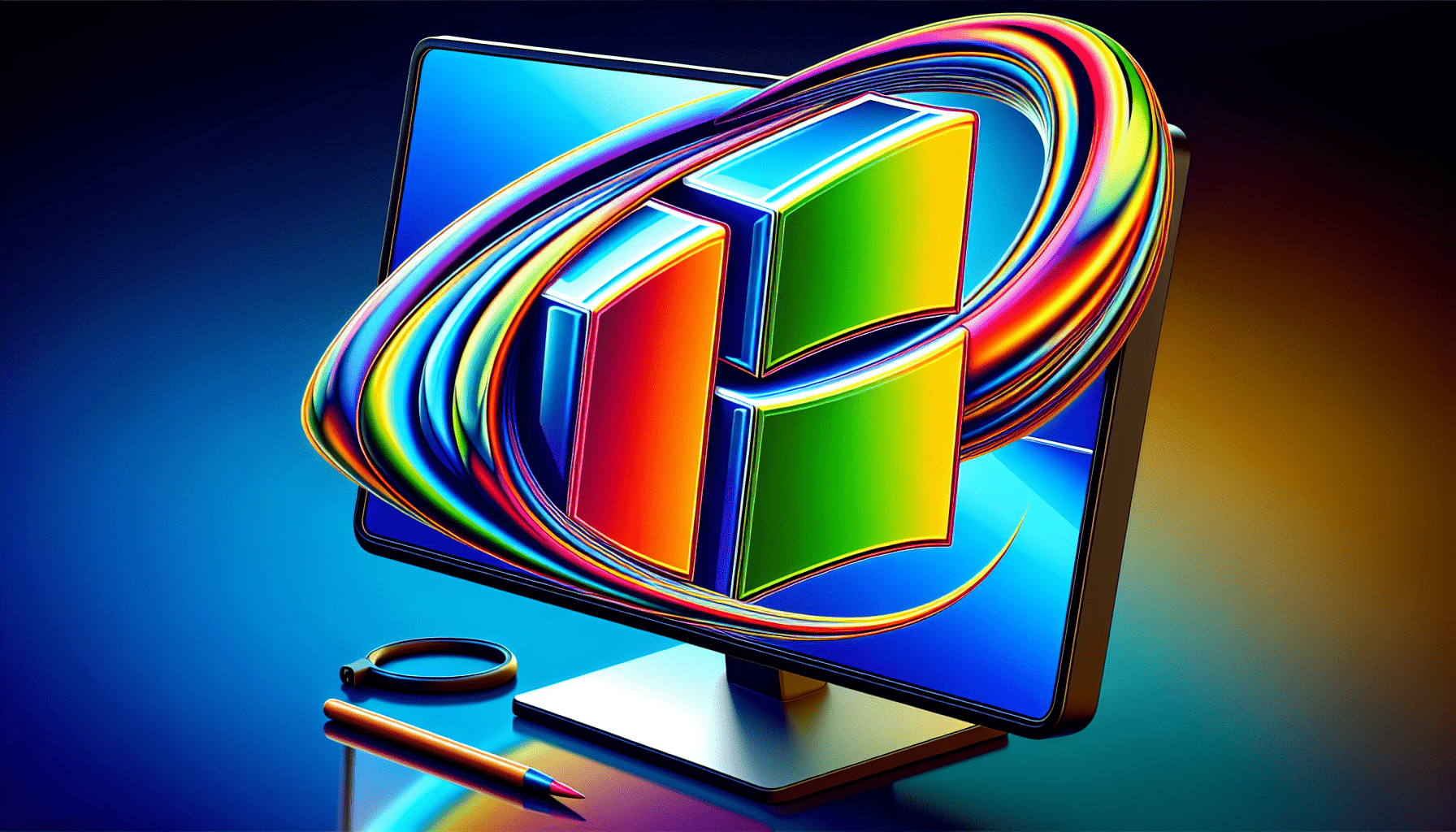


Are you curious about how to keep a close eye on your laptop’s temperature? Look no further! In this article, we will explore various software options available to monitor your laptop’s temperature in real-time. By having access to this valuable information, you can ensure that your laptop remains cool and avoid any potential overheating issues. Stay tuned to discover the perfect software solution for your monitoring needs!
Importance of Monitoring Laptop Temperature
If you’re a laptop user, it’s crucial to pay attention to the temperature of your device. Laptop temperature monitoring is essential for several reasons, including understanding potential temperature issues, ensuring performance and longevity, and preventing damage to your hardware.
Understanding Laptop’s Temperature Issues
Laptops, unlike desktop computers, have compact designs that often lack sufficient cooling mechanisms. This makes them more prone to overheating, especially during resource-intensive tasks like gaming or running demanding software. High laptop temperatures can cause decreased performance, unexpected shutdowns, and even permanent damage to the internal components.
Why Continuous Monitoring is Necessary
Continuous monitoring of your laptop’s temperature is necessary because it allows you to keep an eye on any potential issues and take appropriate actions. By regularly checking the temperature, you can identify patterns or trends, such as specific tasks or applications that consistently push your laptop’s temperature to unsafe levels. This knowledge will help you adapt your usage habits or seek solutions to keep your laptop running optimally.
Consequences of High Laptop Temperature
Ignoring high laptop temperatures can lead to various negative consequences. Excessive heat can cause components like the CPU (Central Processing Unit) and GPU (Graphics Processing Unit) to throttle down, decreasing overall performance. It can also increase the chances of data loss, system crashes, and hardware failures. Over time, these problems can significantly reduce the lifespan of your laptop and result in expensive repairs or the need for a replacement.
Understanding Laptop’s Temperature Indicators
To effectively monitor your laptop’s temperature, it’s important to understand the various temperature indicators within your device. Here are the key temperature measurements to look out for:
CPU Temperature
The CPU, often referred to as the brain of the computer, is a critical component that generates a significant amount of heat when in use. Monitoring the CPU temperature is vital as it can reach high temperatures during demanding tasks. To ensure optimal performance and prevent overheating, it’s essential to keep an eye on your CPU temperature and take necessary actions if it consistently exceeds safe thresholds.
GPU Temperature
The GPU is responsible for rendering graphics and images on your laptop. While not all laptops have dedicated GPUs, those that do can generate considerable heat, especially during gaming or graphic-intensive applications. Monitoring the GPU temperature is crucial to prevent overheating, as high GPU temperatures can lead to performance issues, graphical artifacts, and even system instability.
System or Ambient Temperature
Apart from monitoring the temperatures of specific components, it’s also important to keep track of the overall system or ambient temperature. This measurement provides a broader view of how well your laptop is dissipating heat. If the ambient temperature consistently rises, it may indicate a problem with the laptop’s cooling system or improper ventilation, leading to increased chances of overheating.
Built-In Options for Laptop Temperature Monitoring
Before exploring external software solutions, it’s worth checking if your laptop offers any built-in options for temperature monitoring. Here are some commonly available options:
Bios hardware monitor
Most laptops come with a Basic Input/Output System (BIOS) that allows you to access hardware settings. Some BIOS versions include built-in monitoring tools that provide temperature information for various components. While BIOS monitoring options may be limited compared to dedicated software, they can still offer valuable insights regarding your laptop’s temperature.
Task Manager in Windows
If you’re using a Windows laptop, the built-in Task Manager can provide basic temperature information. By opening the Task Manager and navigating to the Performance tab, you can view the CPU usage and temperature. While not as comprehensive as dedicated software, this built-in option can give you a quick overview of your laptop’s temperature.
Use System Information app on Mac
Mac users can utilize the System Information app to access certain hardware details, including temperature information. To access it, go to “Applications,” then “Utilities,” and open “System Information.” Within the app, navigate to “Hardware” and select “Temperature.” This will display the current temperature readings for various components of your Mac laptop.
Free Software for Monitoring Laptop Temperature
If your laptop doesn’t have built-in temperature monitoring options or you require more comprehensive features, there are several free software solutions available. These programs offer real-time monitoring, detailed temperature data, and additional features to help you keep your laptop’s temperature under control. Here are some popular options:
Speccy
Speccy is a user-friendly software that provides detailed information about your laptop’s hardware, including temperature readings. It displays real-time temperature data for the CPU, GPU, motherboard, and other components. Additionally, Speccy offers other useful information, such as disk usage, RAM usage, and operating system details.
HWMonitor
HWMonitor is another popular choice for monitoring laptop temperature. It supports a wide range of sensors and provides real-time temperature information for the CPU, GPU, hard drives, and other components. HWMonitor also offers customizable visual alerts, allowing you to set temperature limits and receive warnings when your laptop exceeds them.
Open Hardware Monitor
Open Hardware Monitor is an open-source software that offers real-time temperature monitoring for your laptop. It provides accurate readings for the CPU, GPU, and other components, along with details such as voltages, fan speeds, and load usage. With its customizable interface and logging capabilities, Open Hardware Monitor is a reliable choice for temperature monitoring.
Core Temp
Core Temp focuses primarily on monitoring your CPU’s temperature. It provides accurate real-time readings for each CPU core, allowing you to identify individual core temperatures and overall CPU temperature trends. Core Temp also offers customizable alerts, temperature logging, and integration with popular software like Rainmeter and AIDA64.
Paid Software for Laptop Temperature Monitoring
While free software solutions offer excellent temperature monitoring capabilities, paid software options provide more advanced features and additional functionalities. If you require advanced monitoring, data logging, or comprehensive diagnostics tools, consider the following paid options:
AIDA64 Extreme
AIDA64 Extreme is a premium software suite that offers in-depth monitoring and diagnostics for your laptop. Alongside temperature monitoring for various components, it provides detailed information about your CPU, GPU, RAM, storage devices, and more. AIDA64 Extreme also offers stress testing and benchmarking features to assess system stability and performance.
HWiNFO
HWiNFO is a comprehensive system information and monitoring tool that caters to advanced users and professionals. It provides accurate temperature readings, detailed hardware information, and customizable sensors. HWiNFO also offers logging capabilities, sensor alerts, and support for external displays like LCDs, VFDs, or OLEDs.
System Monitor
System Monitor is a powerful paid software solution that offers real-time temperature monitoring, usage statistics, and comprehensive diagnostics for your laptop. It provides detailed information and visual representations of your hardware components, including temperature, load usage, fan speeds, and more. System Monitor also includes customizable alerts and a logging feature to track temperature trends.
Important Features to Look for in Temperature Monitoring Software
When selecting temperature monitoring software, it’s essential to consider certain features and functionalities that will enhance your monitoring experience. Here are some key features to look out for:
Real-Time Monitoring
Ensure the software provides real-time temperature monitoring, allowing you to view up-to-date temperature readings without delays. Real-time monitoring helps you identify temperature spikes or unusual behavior immediately, enabling prompt actions to prevent overheating.
Overheating Alarm
Look for software that offers customizable alerts or notifications when your laptop’s temperature exceeds safe limits. These alarms can alert you to potential overheating issues and help you take immediate measures to avoid hardware damage.
Data Logging
Data logging allows you to record temperature readings over time, enabling you to analyze temperature trends and potentially pinpoint problematic scenarios. Having access to historical temperature data can assist in diagnosing long-term issues and adapting your laptop usage habits accordingly.
User Interface
Consider the user interface of the software to ensure it is user-friendly and intuitive. A clean and well-organized interface will make it easier to navigate through temperature data and understand the information presented, even for less tech-savvy users.
How to Use Laptop Temperature Monitoring Software
Using laptop temperature monitoring software is generally straightforward, but here are the basic steps involved:
Installation and Setup
- Download and install the chosen temperature monitoring software from the official website.
- Launch the software and configure any settings or preferences according to your requirements.
- Familiarize yourself with the user interface and locate the temperature monitoring section.
- Make sure the software is running in the background to continuously monitor your laptop’s temperature while in use.
Interpreting the Results
- Monitor the temperature readings for your CPU, GPU, and other components in real-time.
- Pay attention to any temperature spikes or consistent high temperatures, as these can indicate potential issues.
- Compare the readings to recommended safe temperature ranges provided by the laptop manufacturer.
- If temperatures consistently exceed safe limits or if you receive alerts, take appropriate actions such as closing resource-intensive applications or checking for cooling system issues.
Troubleshooting High Laptop Temperature
If you’re experiencing high laptop temperatures, several troubleshooting methods can help mitigate the issue:
Cooling Solutions
Investing in additional cooling solutions can greatly help in reducing high laptop temperatures. These can include laptop cooling pads with built-in fans, laptop cooling stands, or even external cooling fans. Improving airflow around your laptop can help maintain lower temperatures during demanding tasks.
Hardware Modifications
In some cases, hardware modifications may be necessary to address persistent overheating issues. This can include cleaning dust from internal components, reapplying thermal paste to improve heat transfer, or even upgrading cooling systems such as fans or heatsinks. However, it’s recommended to consult a professional or follow manufacturer guidelines when making hardware modifications.
Behavior Changes
Changing your laptop usage habits can also have a significant impact on temperature levels. Consider avoiding resource-intensive tasks for extended periods, closing unnecessary applications, and optimizing power settings. Using your laptop on a hard, flat surface can also help ensure proper airflow and cooling.
Frequently Asked Questions about Laptop Temperature Monitoring
What is a safe laptop temperature?
Safe laptop temperatures can vary depending on the specific hardware and manufacturer recommendations. As a general guideline, most laptop components should operate within the range of 40°C to 70°C (104°F to 158°F) under normal operating conditions. It’s advisable to consult your laptop’s documentation or the manufacturer’s website for specific temperature guidelines.
What is GPU temperature?
GPU temperature refers to the temperature of your laptop’s Graphics Processing Unit, which is responsible for rendering graphics and images. High GPU temperatures can result in performance issues, graphical artifacts, and even system instability. Monitoring the GPU temperature is crucial, particularly for gaming or graphic-intensive tasks.
Why is my laptop overheating?
Laptop overheating can occur due to various reasons, including insufficient cooling mechanisms, dust accumulation, heavy usage of resource-intensive applications, inadequate ventilation, or faulty cooling components. Regular monitoring and maintenance can help identify the underlying causes and allow you to take appropriate actions to prevent overheating.
Is free temperature monitoring software safe?
Most reputable free temperature monitoring software options are safe to use. However, it is always recommended to download software from official sources or trusted websites to minimize the risk of downloading malware or potentially harmful software. Reading user reviews and checking software ratings can also help ensure the safety and reliability of free temperature monitoring software.
Conclusion: Choosing the Right Temperature Monitoring Software
When selecting temperature monitoring software for your laptop, it’s important to consider factors like compatibility, cost, functionality, and customer support. Choose software that is compatible with your operating system and provides the necessary features to suit your monitoring needs. Balancing the cost and functionality is crucial, ensuring that you get the best value for your investment. Additionally, consider the availability of customer support and updates, as these can greatly enhance your experience with the software in the long run. By choosing the right temperature monitoring software, you can effectively monitor and manage your laptop’s temperature, prolonging its lifespan and ensuring optimum performance.





